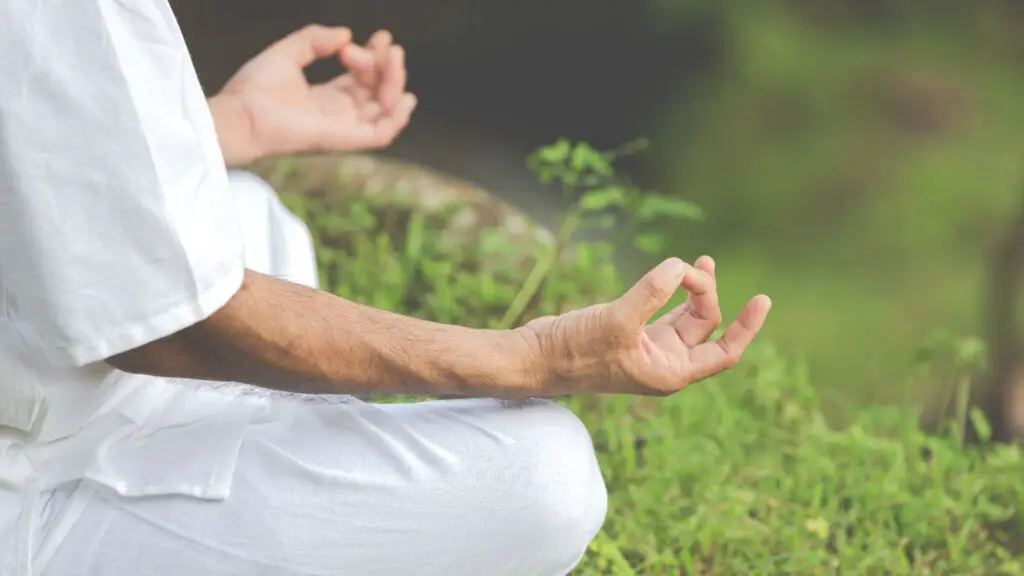In today’s fast-paced world, many people face a relentless struggle with pain and anxiety. The search for relief often leads to medications that may come with side effects. But what if a natural, side-effect-free solution exists? Enter meditation—a centuries-old practice gaining scientific recognition for alleviating physical pain and mental stress.
This article delves into the transformative potential of meditation for pain and anxiety, providing actionable insights, scientific backing, and techniques to help you take control of your well-being.
What is Meditation?
Meditation is a mental practice that involves focusing one’s mind to achieve heightened awareness, clarity, and emotional stability. Many types of meditation exist, including mindfulness, transcendental, loving-kindness, and more, all of which aim to create a peaceful state of mind.
How Meditation Works
Meditation shifts the brain’s focus from the pain and anxious thoughts to a state of calm awareness. It activates the parasympathetic nervous system, often referred to as the “rest and digest” mode, counteracting stress responses like rapid heart rate and shallow breathing.
The Link Between Meditation, Pain, and Anxiety
Pain Relief Through Meditation
Research has shown that meditation can significantly reduce the perception of pain. It works by:
- Altering Brain Activity: Meditation reduces activity in the somatosensory cortex, which processes pain, and increases activity in areas associated with emotional regulation.
- Boosting Endorphins: Regular practice helps release feel-good hormones, acting as natural painkillers.
- Changing Pain Perception: Instead of focusing on the pain, meditation teaches acceptance, making it feel less overwhelming.
How Meditation Reduces Anxiety
Meditation targets the root causes of anxiety by:
- Breaking the Cycle of Worry: By focusing on the present, it halts the loop of anxious thoughts.
- Lowering Cortisol Levels: This stress hormone decreases with consistent meditation practice, promoting relaxation.
- Improving Emotional Resilience: Meditation strengthens areas of the brain responsible for emotional regulation, such as the prefrontal cortex.
Scientific Evidence Supporting Meditation
Clinical Studies on Meditation and Pain
A groundbreaking study from the National Institutes of Health (NIH) revealed that meditation reduced chronic pain by 57%, and in some cases, up to 90% with advanced practice.
Meditation and Anxiety Research
A 2014 meta-analysis published in JAMA Internal Medicine concluded that mindfulness meditation programs showed significant improvement in anxiety, depression, and pain compared to usual treatments.
Meditation Techniques for Pain and Anxiety
1. Mindfulness Meditation
- How it Helps: Encourages non-judgmental awareness of the present moment, reducing pain intensity and anxious thoughts.
- How to Practice:
- Sit in a comfortable position.
- Close your eyes and focus on your breath.
- When your mind wanders, gently guide it back to your breath.
2. Body Scan Meditation
- How it Helps: Promotes relaxation and reduces physical tension by bringing awareness to different parts of your body.
- How to Practice:
- Lie down or sit comfortably.
- Close your eyes and focus on your toes.
- Gradually move your attention upward to your head, relaxing each body part as you go.
3. Loving-Kindness Meditation
- How it Helps: Replaces negative emotions with compassion, reducing anxiety.
- How to Practice:
- Focus on feelings of love and kindness.
- Repeat phrases like, “May I be happy, may I be healthy.”
- Extend these feelings to others.
Tips for Starting a Meditation Practice

- Set Realistic Goals: Start with 5-10 minutes daily and gradually increase as you get comfortable.
- Create a Routine: Meditate at the same time each day for consistency.
- Choose a Quiet Space: Eliminate distractions to focus better.
- Use Guided Meditations: Apps like Calm or Headspace offer great resources for beginners.
Benefits of Meditation Beyond Pain and Anxiety
1. Enhanced Sleep Quality
Meditation helps relax the mind, improving the quality and duration of sleep.
2. Better Focus and Concentration
Regular practice sharpens attention, making daily tasks more manageable.
3. Improved Physical Health
Meditation reduces blood pressure, boosts immunity, and improves heart health.
Common Challenges and How to Overcome Them
- Restless Mind: Accept that thoughts will wander and gently refocus.
- Difficulty Finding Time: Even 5 minutes during a break can make a difference.
- Impatience: Remember, meditation is a practice, not perfection. Progress takes time.
The Future of Meditation in Healthcare
With mounting evidence of its benefits, meditation is becoming a staple in integrative medicine. Many hospitals and wellness centers now offer meditation programs as part of pain and stress management.
Conclusion
Meditation is more than just a relaxation tool—it’s a transformative practice with profound benefits for pain and anxiety relief. Whether you’re dealing with chronic pain, stress, or a racing mind, meditation offers a natural, effective solution to regain control and find peace.
Start small, stay consistent, and watch how this simple practice reshapes your mind, body, and soul. Are you ready to embark on this journey to well-being?
FAQs
1. How long does it take to see results from meditation?
Results vary, but many people notice reduced stress and pain after a few weeks of consistent practice.
2. Can meditation replace medication for anxiety and pain?
Meditation is a complementary approach. Consult your doctor before altering any medication regimen.
3. Do I need a teacher to learn meditation?
While a teacher or app can be helpful, meditation can also be self-taught with proper resources.
4. How often should I meditate for pain relief?
Aim for at least 10-20 minutes daily to see significant benefits.
5. Is meditation suitable for everyone?
Yes! Meditation is adaptable and can be modified for any age or condition.